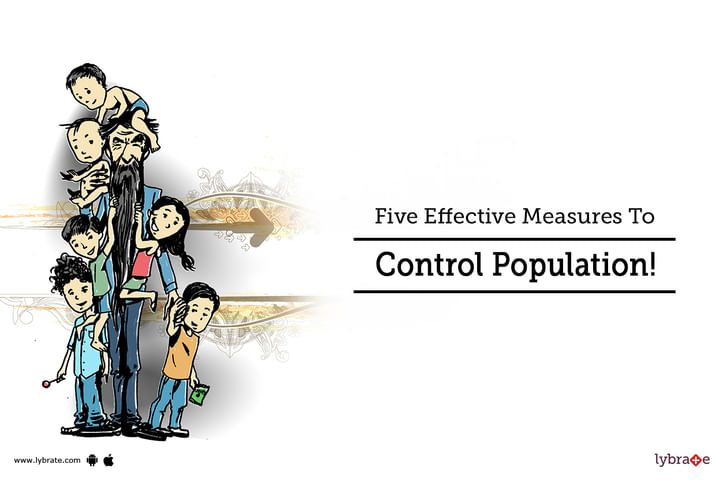Five Effective Measures To Control Population!
Population growth is a major concern in most developing countries across the globe. As per the reports of the United Nations, the estimated global population was 7 billion in the year 2011. In the next three decades, it is expected to increase by 2 billion people, taking the final count from 7.7 billion in 2020 to 9.7 billion in 2050. By the start of the 22nd century, the world population could peak at approximately 11 billion.
India currently has a population of 1.35 billion and such a dramatic growth is largely driven by more and more people surviving to reproductive age, and is accompanied by increasing urbanization, accelerating migration, and significant changes in the fertility rates. These growing trends will leave widespread consequences on the next generations.
Given the staggering population growth, the Governing Council of the UN Development Programme founded World Population Day in 1989. It is an annual event, observed worldwide on July 11. World Population Day aims to raise awareness among people on various population issues – maternal health, gender equality, family planning, poverty and human rights – as well as adopt effective measures to keep a check on the increasing numbers.
Here are five effective population control measures that the world needs to implement at the earliest –
-
Women empowerment - In many societies, women are considered a medium of producing heirs and are therefore married off at an early age. Empowering young girls and women in matters concerning them, such as marriage and childbirth, is a major step in curbing population growth. Women should be able to voice their opinions and make decisions on their own, especially when it comes to rearing and bearing children. All countries should take necessary steps, such as provide access to education and employment, to encourage women empowerment and eliminate gender discrimination.
-
Education for all - Education forms the backbone of the economy and an individual. Educated men and women acknowledge the hardships of having a large family and understand the consequences of the growing population. They prefer delayed marriage and adopt small family norms. Particularly, educated women tend to be more health-conscious and avoid conceiving frequently, thus contributing to a reduced birth rate. Without access to education, women empowerment and the awareness campaigns will prove to be pointless and insufficient.
-
Eliminating the barriers to contraception - Ensuring that everyone has access to cheap and effective contraception tools can help avoid cases of multiple pregnancies and unwanted childbirth. Hospitals and healthcare facilities must be equipped with birth control measures and medical procedures since many people may not have the means or awareness to use contraceptives. The proper use of birth control pills and condoms must be encouraged and advertised along with ensuring easy and cheap access to these. Not only do contraceptives prove useful in controlling the population, but it also prevents the risk of spreading and contracting STDs.
-
Government incentives - Government incentives are an efficient policy measure in fighting issues arising from population growth. Providing the working class with financial, educational, or even medical incentives can go a long way in controlling the birth rates. Certain government policies offer a certain amount to families with two children or discounted/free education to a single child.
-
Promote family planning - The family planning method implies family by choice, and not by chance. It allows people to plan and determine the desired number of kids and the timing and spacing of their births. Unintended pregnancies can be avoided with safe sex practice and proper preventive measures.
Apart from these, improving employment opportunities, and advancements in medical facilities, particularly in reproductive healthcare, can also help reduce the rate of population and solve the problem of population explosion in the country and beyond.



+1.svg)
